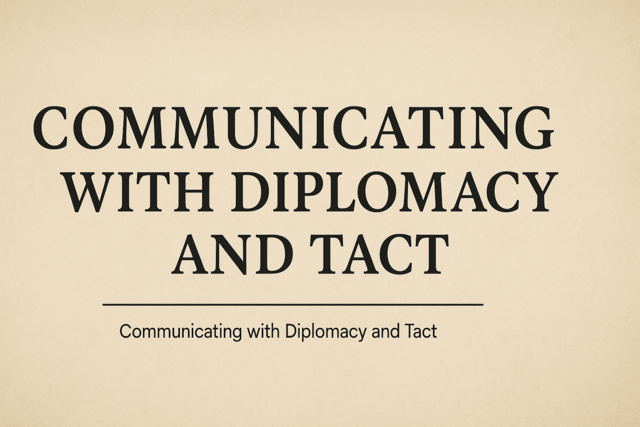Dealing With Workplace Conflict
For many people, conflict does not have to be clearly defined for it to be recognizable. You simply get a feeling in your stomach when you see the other person, or you might have had an interaction that has left you feeling off.
In the workplace, this can be difficult, especially since the workplace is filled with relationships you need to cultivate and support. At the same time, you might have relationships in your workplace that have levels of authority and power, for instance, your boss.
Conflict can creep up in a number of interactions, helping to cause things to be sticky at work, and things can become problematic for everyone in the office if things are not resolved.
Before you begin to take action, let us talk about what conflict can look like in the workplace, how to determine what the conflict is, and then whether it needs a response.
What Does Conflict Look Like?
Depending on where you work and who you work with, conflict can appear in many different ways. Conflict might be something that is apparent to everyone, while other moments of conflict might be more subtle and look like someone avoiding someone else.
Let us think about each of these vast definitions, and then we can begin to ask questions about what other possibilities there may be.
First, the conflict that many people can feel viscerally is the conflict that happens as the result of:
- An argument between co-workers.
- A scolding or a disagreement in front of peers or team members.
- A power struggle within a group, for example, one person wants to do things one way and another does not.
Conflict in either of these situations can look like:
- Displays of anger.
- Ongoing arguments.
- Complaints about the other person or team.
- Lack of willingness to help the person who is in conflict with another person.
- Missed opportunities for advancement.
Conflict is more than just an argument between two people in the workplace. When there is a job in the mix, the conflict can easily escalate into something more, if you do not know what to do about the situation.
In addition, sometimes, conflict is implied, which can be the trickiest part of being in the workplace. You might think that something is wrong, or that two people are in a disagreement about something, only to find out that you were not correct. Sometimes, you might know that something is causing troubles for people in your office, but it is a personal problem that cannot be fixed at work. Moreover, that can make you feel conflicted about what your role is in the situation.
That is just the beginning of the impact that conflict can have on your office life.
The Impact(s) of Conflict
While you know how conflict makes you feel in your personal relationships, you may not realize just how similar conflict can feel at work. Conflict can be just as damaging to the workplace as it can be on a relationship.
At work, conflict can cause:
- Reduced productivity.
- Lowered collaborative teamwork.
- Increased stress.
- Increased sick days.
- Higher employee turnover.
- Management difficulties.
- Lack of results.
- Communication problems.
When people cannot work together, it can cause ongoing troubles in the workplace. There may be troubles working together, getting things done, and continuing to be a successful company.
Getting to the source of conflict and getting some tools in place will help workers and managers avoid these outcomes. In addition, it will make working together easier and more enjoyable.
Getting the Whole Story
Before moving into managing conflict or even discussing it at length, an easy way to look at these sticky situations is to find out the facts. When you are able to find out what really happened and what was done about the situation, you can clearly understand what is happening, and respond accordingly.
To find out the whole story, you might want to:
- Talk to the people involved.
- Ask the other person (if you are in a conflict situation) what they think happened).
- Find any witnesses to the situation.
By gathering the information about the incident, you might learn something about the situation that you did not realize while you were involved. In addition, finding out the facts will help to dispel any lingering feelings or opinions that you might have formed instantly.
Gathering accurate information can be challenging, but the more time you can spend learning about what happened, the easier it will be to move forward towards a solution.
Do You Need to Respond?
For someone who does not like to think about conflict, there might be a question as to whether you even need to respond to the conflict that is occurring. That is a fair question.
When you are faced with a conflict, it can help to think about a few things.
- What is my role in the conflict?
- What harm is this causing myself or others in the workplace?
- Is it my job to help?
- Have I been asked to help?
- Do I need to work with this person or team?
- What has already been done?
The more you look into the questions about what has happened and what your role is, the more you can see whether a response is needed.
For example, if the situation was a misunderstanding that did not really cause any harm, then you might be able to apologize and then let the matter go. But if the situation is large, and you are intimately involved, you may want to focus on how you can start to fix this situation and how you can make things better.
Strategies for Resolving Conflicts
As soon as you can agree that conflict is happening and that something needs to be done, it is a good idea to look at the process as being more than one step.
After all, each conflict will require different actions and methods to help get it to resolution. One system that can be helpful is to start by approaching the person who is in conflict and trying to work on the problem together.
If that does not work, move the situation to the larger group might be helpful, as more people can offer their ideas for a solution.
In addition, if that does not seem to help, then it might be wise to move the conversation out to someone who is impartial in the matter, like a meditator. That person can help to sort out all of the facts and then move those involved into a more productive conversation.
This process or system may not work for everyone, but it might be just what you need to start turning a conflict into a productive situation.
Open Communication
When you are in a conflict situation with someone else, it can help to sit down with him or her first. You might do this without anyone else around, so you can have an open discussion to figure out what is happening and what might be done next.
This is a situation in which you both have a chance to speak, ideally, and it is a space for you to have a conversation so you can work out a conflict before anyone else knows about it. Even though it might be impossible to keep the conflict from being noticed, the more you can do to keep it from affecting others, the more you will keep your office peaceful.
In addition, sometimes conflicts in the office are more of a misunderstanding or someone just having a bad day. Give the person you are in conflict with a chance to talk about what has been happening to them and how you might be able to come to a better place.
You might not agree with each other, but at least you can figure out what happened, how to avoid it in the future, and you can move on with your days.
Team Meeting
However, if the one-on-one conversation does not work out, does that mean you are destined to have a conflict ridden workplace? Absolutely not. In some groups, when smaller discussions do not work, then the two people in conflict might bring the concern to a group, to the team, or to their leaders.
In this meeting, the people in conflict might share what has happened and then talk about what they have done to make things better. At that point, the team or the leaders might offer suggestions about how the process can be more effective and the people in conflict can decide whether to follow those ideas.
The meeting option can be volatile in some situations, as some people may take sides, creating more conflict. Instead, focus on the team and the people in the meeting offering solutions and recommendations.
After all, the more people who are involved in the conflict management, the more likely it is to be resolved. As an added benefit, the entire workplace then gets a chance to learn more about how to manage conflicts in the future.
Sometimes, there might be situations where the one-on-one talk does not work, nor does the team meeting. On the other hand, you might have a situation where you are in a conflict with someone who does not want to work it out.
However, when you are in the workplace, it is essential that you figure out conflicts as they can influence your productivity, your accuracy, and your day-to-day tasks.
One way to give the conflict a chance to be resolved, without having to know how to handle the conflict yourself is to have a mediator come in and talk to the both of you.
This is a person who is trained to manage difficult situations, and they want the two people to come to a better understanding.
They do not choose sides, and they help to break down the conflict into what happened, what both sides want to see happen, and then they help make a plan for the future.
In some areas, there are free mediation services available, or you may want to hire a professional to help you sort out the conflict.
When a conflict does get to the point where you feel you need professional support, then you also may want to agree to settle on the terms that the mediator presents in the end. This way, you will have a resolution at the end of your time with the professional.
Here is what a typical mediation meeting might include.
- The mediator meets with each of the participants to find out what their perspectives are on the situation.
- The professional might also gather information about the conflict from other parties or it might be collected during the day of the meeting.
- A goal for the mediation is established.
- Each side of the conversation talks about what they want to see as a result.
- The mediator asks questions of each side of the conversation to see how they would respond to the needs of the other person.
- The mediator works to ensure both sides are heard, and that both sides get something from the process.
- This process can include more focus on feelings than on the facts, or the reverse.
It can help to find a mediator who is already well versed in the industry and its uniqueness, so they understand what is being said and what the goals might be.































